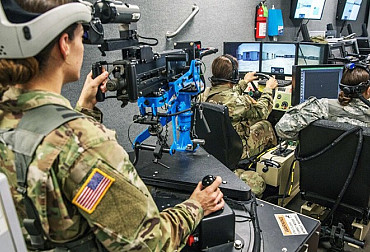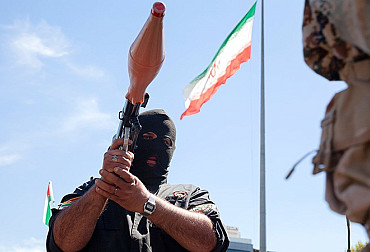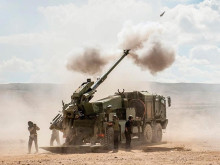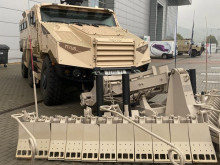The possible future capabilities of the Czech Army cannot be condemned a priori
Although the process of modernisation of the Czech Armed Forces has been more or less continuous so far, in connection with the war in Ukraine a turning point has occurred, when the modernisation of our army needs to be significantly accelerated. It is in connection with the modernisation of the Czech Armed Forces that the public space is filled with considerations about whether our army needs or will use this or that capability, and in this context, claims are often made that we do not actually need the capability in question. However, to renounce certain capabilities a priori, without a deeper analysis, is questionable to say the least.
A typical example is the fifth-generation F-35 aircraft, the purchase of which is currently being negotiated with the Americans by representatives of the Ministry of Defence. If the purchase were to go ahead, the F-35s would replace the current fleet of Swedish JAS-39 Gripen aircraft around 2030. Leaving aside the arguments concerning the financial cost of acquiring the aircraft themselves, their maintenance and other costs associated with their operation (infrastructure, personnel, etc.), arguments are often made against this acquisition that the F-35 aircraft possesses capabilities that the Czech Armed Forces will not use anyway, as they do not currently use them even with Gripen aircraft. These include advanced strike capabilities against ground targets. However, the acquisition of the Gripen aircraft took place in a significantly different situation (political, financial and security) than the current situation related to the war in Ukraine and the possible redeployment of US capabilities towards the Western Pacific region against the People's Republic of China, so the use of the new capabilities of the aircraft cannot be so easily dismissed. Whether our military will be able to make proper use of the F-35's capabilities for economic or technological reasons is another question altogether. However, if for some reason certain capabilities could not be used within the Czech Armed Forces, they could certainly be used in the context of deployment in the operations of the Alliance, of which the Czech Republic is a member.
Another example is salvo rocket launchers. The war in Ukraine clearly shows that rocket artillery plays a significant role on the current battlefield, yet there are "military specialists" who consider this capability unnecessary. Although the Army has discarded this capability in the past without replacement, it would certainly be appropriate to consider a possible return to this capability now. In the case of salvo rocket launchers, it is mainly the US HIMARS rocket launchers and their relatively great success on the Ukrainian battlefield. There has also been a recent prioritisation by the US of the delivery of these systems to Taiwan, whose government has subsequently decided to increase the number of units being purchased after it became clear that the US was unable to deliver the 155mm Paladin howitzers. Deliveries of a total of 29 launchers will begin as early as 2026, instead of the planned 2027.
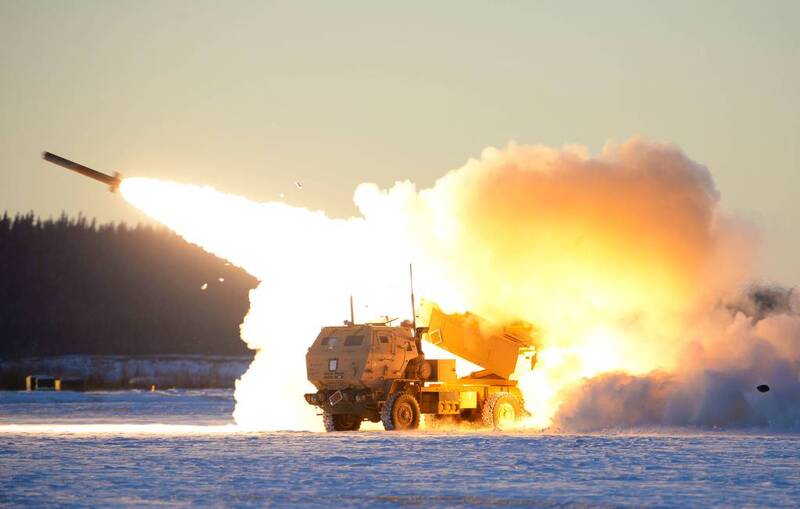 Picture: M142 High Mobility Artillery Rocket Systems (HIMARS) | Beaux Hebert / Air Force
Picture: M142 High Mobility Artillery Rocket Systems (HIMARS) | Beaux Hebert / Air Force
The Czech RM-70 Vampire MLRS rocket launchers on Tatra T 815-7 chassis with armoured cab are also operating on the Ukrainian battlefield and feature a modern weapon control and guidance system, as well as a fire control system with ballistic computer, a new inertial navigation system and GPS, a communication and data link system, and the ability to control the entire weapon system directly from the vehicle cabin or even remotely. The rocket launchers can use the established 122 mm calibre rockets, which are also available in new more powerful variants with longer range. A hybrid system that can use both "dumb" rockets designed to cover the target area and precision munitions seems ideal.
Air defence assets also play an important role on the Ukrainian battlefield. In this area, the Czech Army is already taking steps to replace the hopelessly outdated Soviet 2K12 KUB systems by acquiring proven Israeli SPYDER systems (the Czech Army will receive four batteries of this system), which, according to available information, could also be capable of countering ballistic missiles such as the Russian Iskander. However, the replacement of the obsolete Soviet KUB systems should not be the end of the modernisation and strengthening of the Czech air defence – on the contrary. A very positive signal is the Czech efforts to participate in the European Sky Shield project, which is intended to strengthen European air and missile defence. The question then arises as to how the Czech Republic will contribute to this project. In addition to European cooperation, however, it is important to build up our own capacities. In the case of air and missile defence, this includes, for example, consideration of the acquisition of THAAD (Terminal High Altitude Air Defence) or Patriot PAC-3 systems. As with the F-35 aircraft or HIMARS missile launchers, these are expensive acquisitions, but it cannot be said unequivocally that we do not need and will not use these capabilities in the future. We also need to think about layering in the case of air defence systems to ensure a combination of short-, medium- and long-range air defence systems. Within the framework of the long-range air defence system, the Czech Republic can temporarily or emergency rely on the "overlap" of the alliance systems over the territory of the Czech Republic, but this will not cover the entire area of the country. The ideal is then the cooperation of individual systems (including foreign ones) in the framework of acquiring and transferring information about the target. The F-35 aircraft, whose on-board systems are capable of intercepting a flying target and, if the aircraft cannot destroy it on its own, will pass on information about the target to other air defence elements, can also assist in this.
Another area that has been discussed in recent months is long-range precision-guided missiles. Although the Czech Armed Forces do not currently possess such a capability, it cannot be condemned out of hand. Nor can the oft-mentioned argument that, if the CAS has done without this capability so far, it will continue to do without it and leave this area to other Alliance member states be unequivocally accepted. The war in Ukraine clearly confirms that long-range missiles, fired from the air, land or sea, are a very important part of today's battlefield. It is thus logical to consider what potential weapons of this category the Czech Army could have at its disposal without violating international agreements. Examples could be the ATACMS missile launched from a HIMARS missile launcher or the Strombreaker missile launched from an F-35 aircraft.
The aim of this article is not to advocate specific weapon systems, but to outline in general terms the fact that in today's dynamic security environment it is impossible to condemn any capability (except perhaps nuclear weapons in the case of the Czech Republic) in advance on the grounds that we do not need or will not need it in the future.















